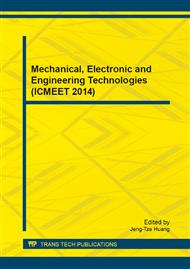p.3
p.7
p.11
p.15
p.19
p.24
p.28
p.32
p.36
Friction and Wear Performances of Magnesium Alloy against Steel under Lubrication of Soybean Oil with S-Containing Additive
Abstract:
A S-containing additive, sulfuration modified soybean oil (named as SSO), was prepared by chemical modification of soybean oil with sulfur compounds. The friction and wear performances of AZ91D magnesium alloy against GCr15 bearing steel under the lubrication of rapeseed oil formulated with SSO were evaluated on a SRV tribotester. The topographies and the chemical species of the worn surfaces of magnesium alloy were analyzed by a scanning electron microscope (SEM) and an X-ray photoelectron spectroscope (XPS), respectively. The results indicated that the friction and wear of the magnesium alloy-steel tribomates could be effectively reduced by formulating SSO into rapeseed oil lubricant. The friction coefficients and the wear volumes of magnesium alloy decreased with increasing contents of SSO. The surface lubricated with SSO-doped rapeseed oil was characterized by less wear as compared with that lubricated with neat rapeseed oil. The enhanced anti-wear and friction-reducing abilities of rapeseed oil by SSO in the lubrication of magnesium alloy against steel were ascribed to the formation of a composite boundary lubrication film due to the strong adsorption of SSO and rapeseed oil onto the lubricated surfaces and their tribochemical reactions with magnesium alloy.
Info:
Periodical:
Pages:
19-23
Citation:
Online since:
April 2014
Authors:
Keywords:
Price:
Сopyright:
© 2014 Trans Tech Publications Ltd. All Rights Reserved
Share:
Citation:


